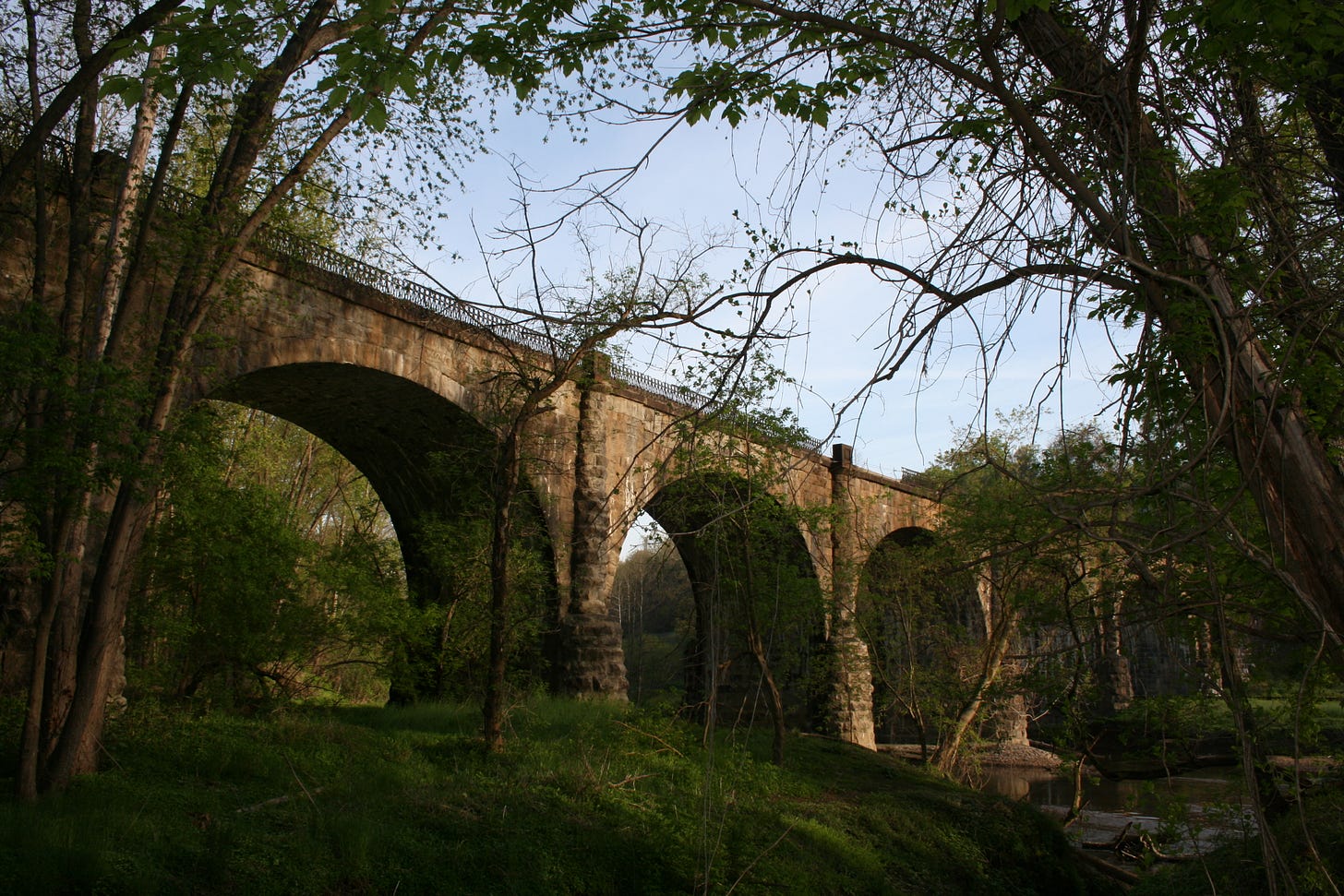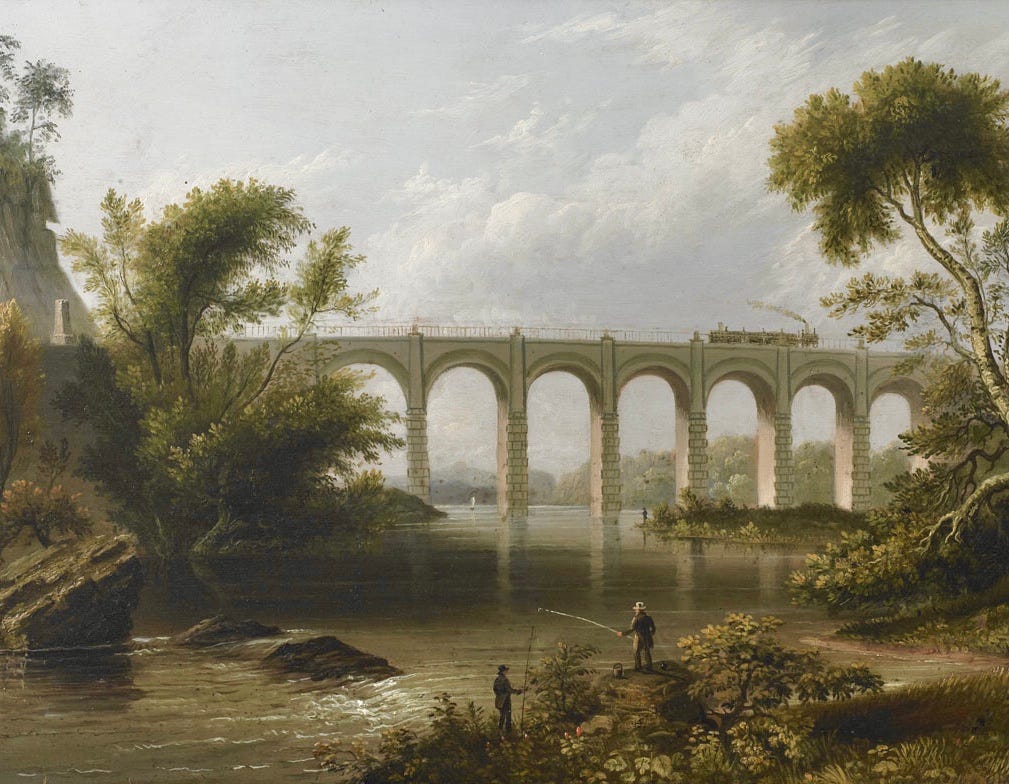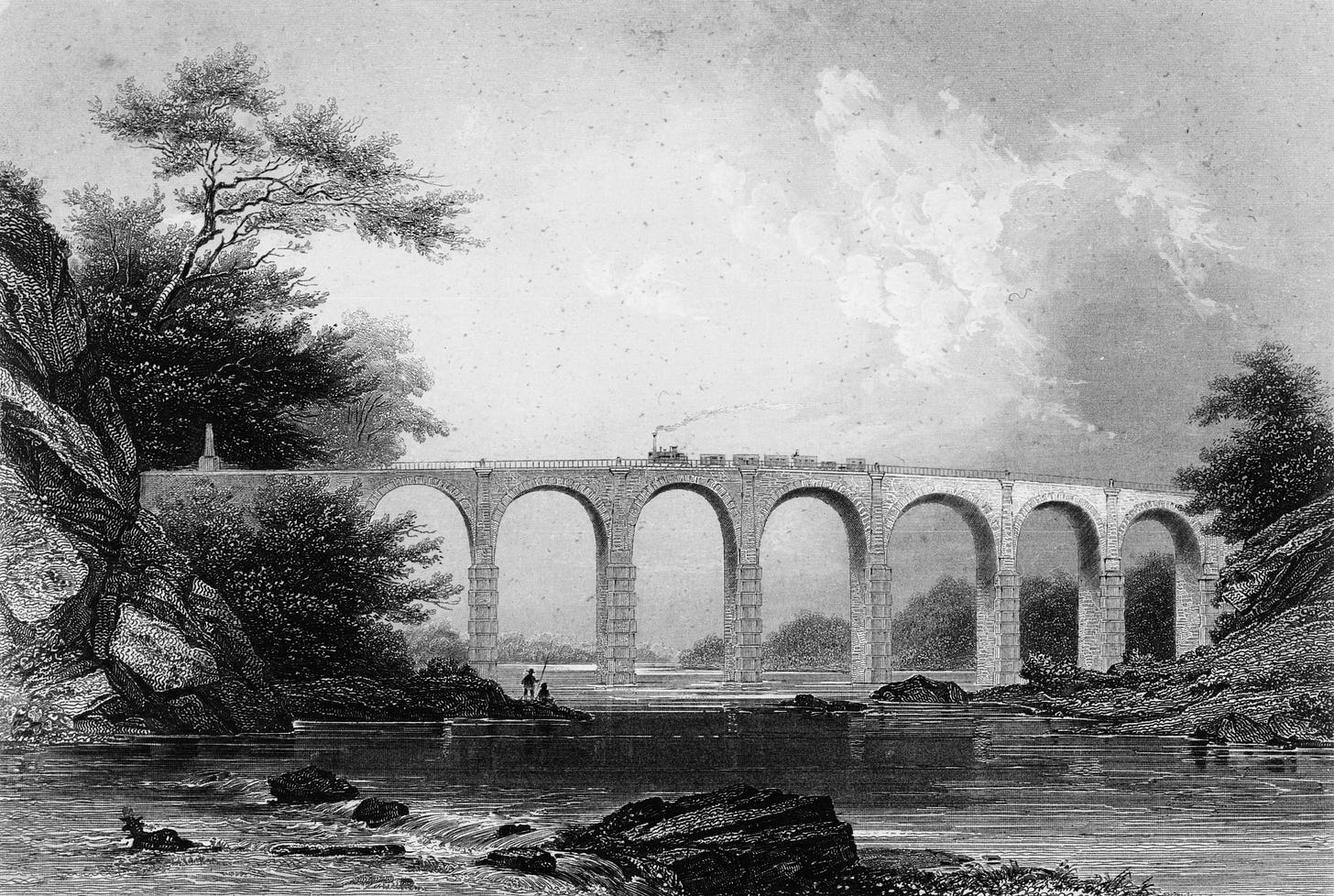Designed with Nature
THE BALTIMORE AND WASHINGTON VIADUCT
The Baltimore and Washington Railroad Viaduct, or the Thomas Viaduct, designed by Benjamin Henry Latrobe II, still carries trains today. — Photo by Bob Kirchman
The son of English born Benjamin Henry Latrobe, who had redesigned the United States Capitol after it was burned in 1814, Benjamin Henry Latrobe II applied his energy as a designer to the creation of magnificent arched stone bridges — notably on the Baltimore and Ohio Railroad and its Baltimore and Washington line.
One particularly beautiful design he created was the viaduct across the Patapsco River at Relay, Maryland for the Baltimore and Washington Railroad. Construction began in 1833 and was completed in 1835. This was not the first multiple arched stone bridge in the world, the Sankey Viaduct on the Liverpool and Manchester Railway is older. Latrobe’s bridge is, however, the oldest curved multiple arch bridge in the world. Designed to gracefully arc away from the Baltimore and Ohio tracks that continue west along the Patapsco, the smooth transition is beautifully expressed in this graceful bridge.
According to the American Society of Civil Engineers, “The route from Baltimore to Washington D.C. required crossing the Patapsco River and surrounding plain at Elkridge and Relay, Maryland, with a structure of sufficient elevation and strength to avoid potential damage from flooding of the river. Further, the crossing required a curved railway alignment with a radius of about 1273 feet and an arc of 4.5 degrees, substantially complicating the design and construction of the viaduct.”
When it was built, there were doubters about the integrity of such an innovative design. Surely it would fall into the river! It even earned the nickname of “Latrobe’s Folly!” But Latrobe would prove to have a “secret weapon.” He subtly built the piers of his bridge in a trapezoidal shape, thus providing support for any outward forces resulting from the curve. It was genius!
Latrobe loaded the finished span with locomotives, back to back. Loading created no problems — in fact, the overengineered span still carries CSX freight trains and MARC commuter trains today — at 189 years old!
Viaduct on the Baltimore and Washington Railroad by James Salisbury Burt, 1832, Oil on Panel. Virginia Museum of Fine Art
The graceful arched viaduct would inspire early romantic artists. Here James Salisbury Burt has painted the bridge — in 1832, according to the VMFA. How can that be if the bridge construction was begun the next year? No doubt, the painter has portrayed the completed bridge based on Latrobe’s preliminary drawings. The adding of human activity was often seen in these type of early paintings of American landscape. Open further investigation, the VFMA documentation is not clear as to the date of the painting. One source says “183-.” Thus we have a bit of a mystery, as the stone marker would appear to have been constructed after the bridge was in place. Also of interest is the distinct possibility that Burt based his paintings on lithographs of the extant bridge.
Frederic Church, painting remote Mount Katahdin in 1860, added discreetly some buildings and other evidences of human activity and commerce that were not there yet. He, and other artists of the period, sought to reconcile human activity with a reverence for the natural world. Latrobe seems to have done so in his use of a rough, rather than a smooth ashlar masonry, for his great bridge.
In a publication entitled The United States Illustrated, 1858, Charles A. Dana presents a lithograph of the Thomas Viaduct that is very similar to Burt’s painting.
Today the Thomas Viaduct stands, not only as an engineering achievement, but as an example of a design that works well within its natural environment. It is an example we can learn from today.
More Photos of the Thomas Viaduct [click to view]
American Society of Civil Engineers Article [click to read]





